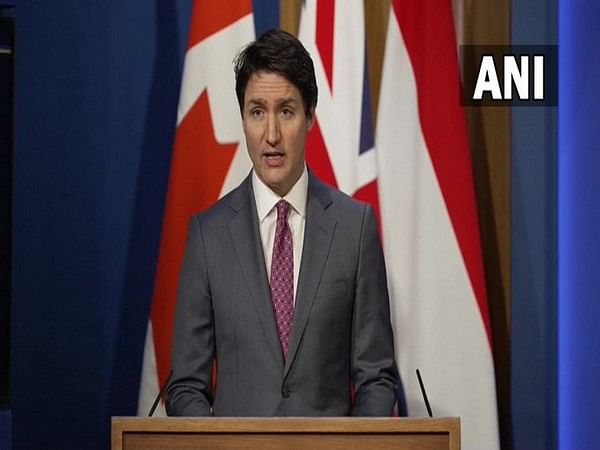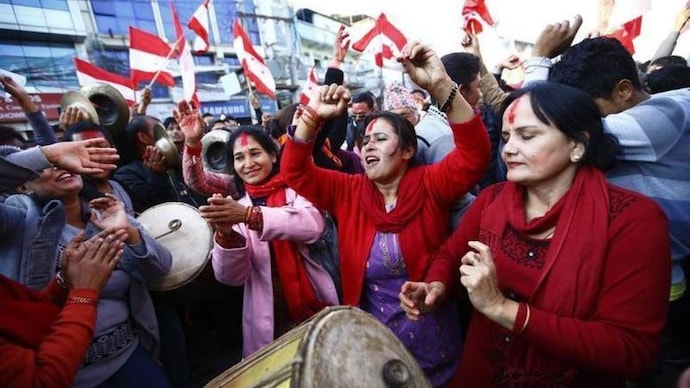Adam Mclean
The strike by 48,000 University of California academic workers is at a critical juncture as the battle enters its third week today. The teaching assistants, lecturers, researchers and other workers are demanding substantial pay raises, including the doubling of teaching assistants’ salaries and cost-of-living (COLA) protections to counter rampant inflation in one of the most expensive states in the country.
The strike, however, is in grave danger. This is not because it lacks public support. On the contrary, the strikers’ demands for inflation-busting raises have won widespread support from workers and students on campus and beyond.
This is precisely why Democratic Governor Gavin Newsom, the state Democrats and their “labor lieutenants” in the United Auto Workers (UAW) and the California Federation of Labor bureaucracy are so anxious to shut it down.
Last week, UAW bargainers announced that they were dropping the demands for COLA, which has been central to the strike. This provoked a firestorm of opposition from strikers, including chants of “No COLA, No Contract!”
This opposition must now take a conscious political and organizational form through the establishment of a rank-and-file strike committee to fight for what workers need, not what UC administrators, state Democrats and union bureaucrats say is affordable. At the same time, this strike committee must reach out to broader sections of the working class—including full-time faculty, UC medical center workers, nurses, educators and railroad and dock workers—to prepare joint action to win this decisive struggle.
To take up this fight, it is crucial for UC workers to know exactly who they are fighting against.
The University of California is overseen by the UC Board of Regents. The majority of the 28-member board, which includes two non-voting members, was appointed directly by Governor Gavin Newsom and his predecessors, including Democrat Jerry Brown.
The Board of Regents is a who’s who of the Democratic Party, the state, and the corporate and financial elite. Though the regents do not receive a salary, the position is lucrative for those with the connections or know-how to draw a profit from it. Their subordinates, the UC president and the chancellors of each of the 10 campuses, are paid salaries ranging from $400,000 to $850,000 to enforce an austerity regime, commensurate with decades of corporate tax cuts and other giveaways handed over by both big business parties.
A brief profile of a few of the board members demonstrates this:
Richard Leib, the current Chair of the Board of Regents, is a businessman with a long history in charter schools, consultancy, and military and intelligence agencies. He was an executive at US Public Technologies, which was acquired iin 1999 by defense contractor Lockheed Martin, where he became an executive. He was appointed by then-Democratic Governor Jerry Brown in 2018.
Gareth Elliott, the current Vice Chair of the Board of Regents, was previously the policy director for state Senator Alex Padilla (Democrat) and policy director and deputy chief of staff for Senate President Pro Tempore Don Perata (Democrat). He has since become a partner at Sacramento Advocates, Inc., a California-based lobbying firm. Also appointed by Brown, he has been a regent since 2015.
Maria Anguiano, after her stint as Vice Chancellor of Planning & Budget at UC Riverside, where she managed an $800 million budget and oversaw campus-wide financial planning and capital asset strategies, became the Executive Vice President of Arizona State University’s Learning Enterprise. She also serves on the board of directors of the KIPP (Knowledge is Power Program) Foundation, an ostensibly “non-profit” but nonetheless lucrative national charter school system, and holds a senior advisory role at the anti-public education Bill and Melinda Gates Foundation. A UC regent since 2017, she also held previous “finance roles” at Barclays Capital and Deloitte.
Anthony Rendon is the current Speaker of the California State Assembly, and his political career has been financed by donations from energy companies—primarily Pacific Gas and Electric Co—which circumvented campaign financing restrictions by donating over half a million dollars to a charity his wife runs. His legislative achievements include killing California’s single-payer health care legislation in 2017 after it was passed in the state Senate. He is a regent “ex officio,” meaning that he is automatically a regent by virtue of his role in the state government.
Ana Matosantos, appointed by Governor Newsom in July 2022, was director of California Department of Finance in both the Brown and Schwarzenegger administrations, where she oversaw the slashing of billions in public spending after the 2008 financial crash. She was also appointed by President Obama to serve on the seven-member Puerto Rico Oversight, Management and Economic Stability Board, which has imposed a brutal program of austerity and privatization on the US-controlled territory.
Howard “Peter” Guber, thecurrent CEO of Mandalay Entertainment group and former chief executive of Sony Entertainment, Columbia Pictures and Polygram Entertainment. Guber, whose net worth is reportedly just shy of $1 billion, is also co-owner of the Golden State Warriors basketball and Los Angeles Dodgers baseball teams.
The unions also have direct representation on the board. John Pérez, cousin of former Los Angeles Mayor Antonio Villaraigosa and another former Democratic speaker of the state assembly, spent seven years as a political advisor for the United Food Commercial Workers union before becoming the political director of the California Labor Federation. His bio on the Regents’ site boasts that while he was speaker, he “eliminate[d] the structural deficit that left California’s budget imbalanced for more than a decade, and successfully passed back-to-back balanced, on-time budgets that resulted in across the board upgrades in California's credit rating.” He became a regent in 2014.
This is the gang of multimillionaire executives, professional budget-cutters and public school privatizers that UC workers are up against. In the main, they are Democrats, which controls every level of state government.
COLA has been a central demand of UC workers since 2019, when academic workers at UC Santa Cruz organized a wildcat strike that quickly spread to other campuses. In response to the strike, Janet Napolitano—then UC President and former Director of Homeland Security under President Obama, mobilized the police to brutalize demonstrators and threatened international students with deportation. The current UC administration is now threatening striking international students again.
Behind the Democrats’ “progressive” pretensions and endless promotion of racialist politics, which recently erupted in the scandal on the Los Angeles City Council, is the ruthless defense of capitalism and the corporate and financial ruling class. The outcome of decades of pro-business policies is demonstrated by the fact that California, the “bluest of blue states,” is the home to largest homeless population and, at the same time, over 180 billionaires.
Far from waging a fight against the Democrats, the UAW bureaucracy is promoting them. Union officials falsely claimed that Senator Bernie Sanders, Congresswomen Alexandria Ocasio-Cortez, Katie Porter and others are allies of the strike while concealing the fact that the Democrats dominate over every aspect of California politics.
From the standpoint of the corporate and Democratic Party establishment and their servants in the UAW and CFL bureaucracy, a victory for the UC strikers would be a dangerous blow to the bipartisan demands that the working class pay for the economic crisis and the cost of war. Such a success, they fear, could unleash an uncontrollable wave of struggles, including by 120,000 railroad and 22,000 West Coast dockworkers who have been blocked for months from striking by the unions and the Biden administration.
But this is exactly what is needed to defeat the corporate and political forces opposing the UC strikers’ just demands. What can or cannot be achieved can only be determined by struggle.
As Mack Trucks workers and socialist candidate for UAW president Will Lehman has said, UC workers must take the conduct of the struggle into their own hands to prevent another sellout by the UAW apparatus.
There is no time to lose. At every campus, workers should elect representatives to rank-and-file strike committees to draw up their own list of non-negotiable demands, including inflation-busting pay raises and COLA, and sharp reductions in housing, transportation, health care and child care costs. Any contract that does not include these basic demands must be opposed.
At the same time, this committee must reach out to railway, dock, oil refinery, manufacturing workers, along with nurses, educators and other workers to prepare common demonstrations, strikes and other actions to win the UC strike and prepare an industrial and political counter-offensive against capitalism and the social inequality, dictatorship and war it produces.









 ISRAELI AUTHORITIES HAVE STEPPED up measures to protect its senior intelligence and security figures, over concerns they may be targeted by agents of the Iranian state, according to news reports. The news comes amidst widespread concerns that the ongoing shadow conflict between Israel and Iran is escalating in the shadow of the Russo-Ukrainian war.
ISRAELI AUTHORITIES HAVE STEPPED up measures to protect its senior intelligence and security figures, over concerns they may be targeted by agents of the Iranian state, according to news reports. The news comes amidst widespread concerns that the ongoing shadow conflict between Israel and Iran is escalating in the shadow of the Russo-Ukrainian war.